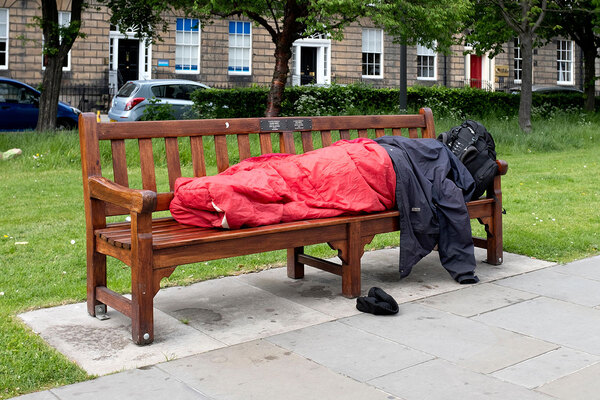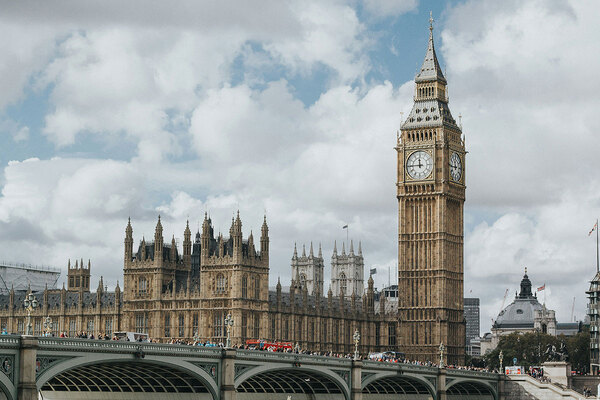You are viewing 1 of your 1 free articles
Homeless families to be moved into blocks with systemic safety issues amid coronavirus crisis
Southwark Council has moved homeless families into empty homes in an estate that requires major work to make it safe from fire or collapse, as it seeks to find self-contained homes during the coronavirus outbreak.
The four towers that make up the Ledbury Estate in south London have many empty flats, as they await either major strengthening works or demolition because of serious construction defects.
The towers were built using the ‘large panel system’ construction method, which became notorious after the partial collapse of Ronan Point in Newham in the 1960s.
But Southwark is now moving families who were living in temporary accommodation with shared bathrooms and kitchens into 60 empty flats in the towers, to allow them to self-isolate during the coronavirus outbreak.
A spokesperson for the London borough said “extra safety measures” had been agreed with the fire service to ensure the blocks are safe to occupy.
According to the most recent statistics, Southwark has 2,731 households in temporary accommodation, including 1,992 families with children – the sixth highest figure in the country. Providing safe accommodation to these families has been a major challenge for councils during the coronavirus outbreak, with many hotels closing their doors.
The Ledbury Estate has been in the spotlight since the Grenfell Tower disaster, with residents raising concerns over large cracks in the walls in summer 2017.
In October, a report by engineering consultancy Arup said that the towers “do not comply with the requirements for resistance against disproportionate collapse”, while the floor panels do not meet gravity loading requirements. There are also concerns about wind resistance.
It recommended remediation works, including a frame of steel columns and beams built inside the flats from the eighth to the 13th floors, held together by a new structure on the roof or demolition.
These options had been due to be subject to a resident ballot in the coming weeks, but this has now been delayed as a result of the outbreak of coronavirus, and the works have been put on hold.
In anticipation of the remediation works, the council has not been placing new residents into the towers. Instead, they have been offered rehousing throughout the borough and the council is buying back homes from leaseholders.
One of the towers on the estate is entirely unoccupied and of the remaining three, only 45 of the existing 168 flats are occupied.
The new safety measures are understood to include a 24-hour waking watch, an integrated fire alarm and work to fill up cracks that could have allowed fires to spread.
Kieron Williams, cabinet member for housing management and modernisation at Southwark, said: “We‘re working very hard to make sure everyone in Southwark has a safe home during this emergency. We moved very quickly in March to offer all rough sleepers self-contained accommodation. Our next priority has been to help families living in accommodation with shared kitchens or bathrooms into self-contained homes so they can safely self-isolate. We’ve already identified 200 properties in the borough for them to move into, including 60 on the Ledbury Estate.
“The homes on the Ledbury are all in blocks people are already living in, but in flats that residents have moved out of ahead of the planned refurbishment or rebuild of the block. They are free to use because the final plans for the four towers on the estate have now been delayed. They were due to be agreed through a ballot of residents in a few weeks’ time but due to the coronavirus that has been put back.
“In the meantime, they are really good-sized homes for families who urgently need them. Whilst there are long-term issues with the blocks, that the refurbishment or rebuild will address, we have extra measures in place that we have agreed with the fire service to ensure they are safe for all residents. We are in constant conversation with the permanent tenants and residents of Ledbury, who understand that in an emergency, the empty properties on the estate provide a safe and comfortable temporary home for these families.”
It is understood that residents will be offered a verbal safety briefing as well as safety information packs when they move in.
Tower block safety campaigning group Tower Blocks UK has produced a separate guide to the safe occupation of the buildings, which it intends to distribute to the new residents. It includes the advice that it is “vitally important” not to bring bottled gas into the building because of the risk of explosion, which could trigger a collapse.
Danielle Gregory, a member of Tower Blocks UK and co-founder of Ledbury Action Group, said: “Whilst we understand the urgency, we feel that Southwark should be exploring safer alternatives first, before moving families into flats that fail to meet the regulations for structural and fire safety.”
The Ledbury Estate was built in 1968-70 using the Taylor Woodrow Anglian large panel system.
It is the same system used at Ronan Point in Newham, east London, which suffered a partial collapse following a gas explosion in May 1968, killing four people. The block, which had only recently been completed, was only partially occupied at the time of the disaster.
Since Grenfell, flaws have been identified at several large panel system blocks around the country, and many have been listed for demolition as a result.









